Curia Generalizia
La Casa della Congregazione: tra Arte e Spiritualità
La pittura murale della Curia Generalizia della Congregazione della Missione
Queste pitture sono un dono della Provincia del Midwest degli Stati Uniti d’America alla Curia Generalizia della Congregazione della Missione. Fratel Mark Elder, un membro dell’attuale Provincia Occidentale, li ha dipinti nel 2000, e ha coinvolto i membri della Curia nella realizzazione di quest’opera. Dopo aver consultato i membri della Curia Generalizia del tempo, Mark ha sviluppato il tema definito dal titolo, seguendo i suggerimenti dei membri della Curia:
a. sfruttare l‘attrattiva delle forme rettangolari dell’architettura della casa e delle sue finestre, b. evitare i riferimenti storici usando al loro posto simboli della natura per descrivere le cinque virtù ed i quattro voti della Congregazione.
Come simbolo della dimensione globale della Congregazione e dell’universalità della missione della Chiesa, Mark ha scelto di usare la lingua latina per tutte le scritte. Nel testo sottostante sono disponibili le traduzioni.
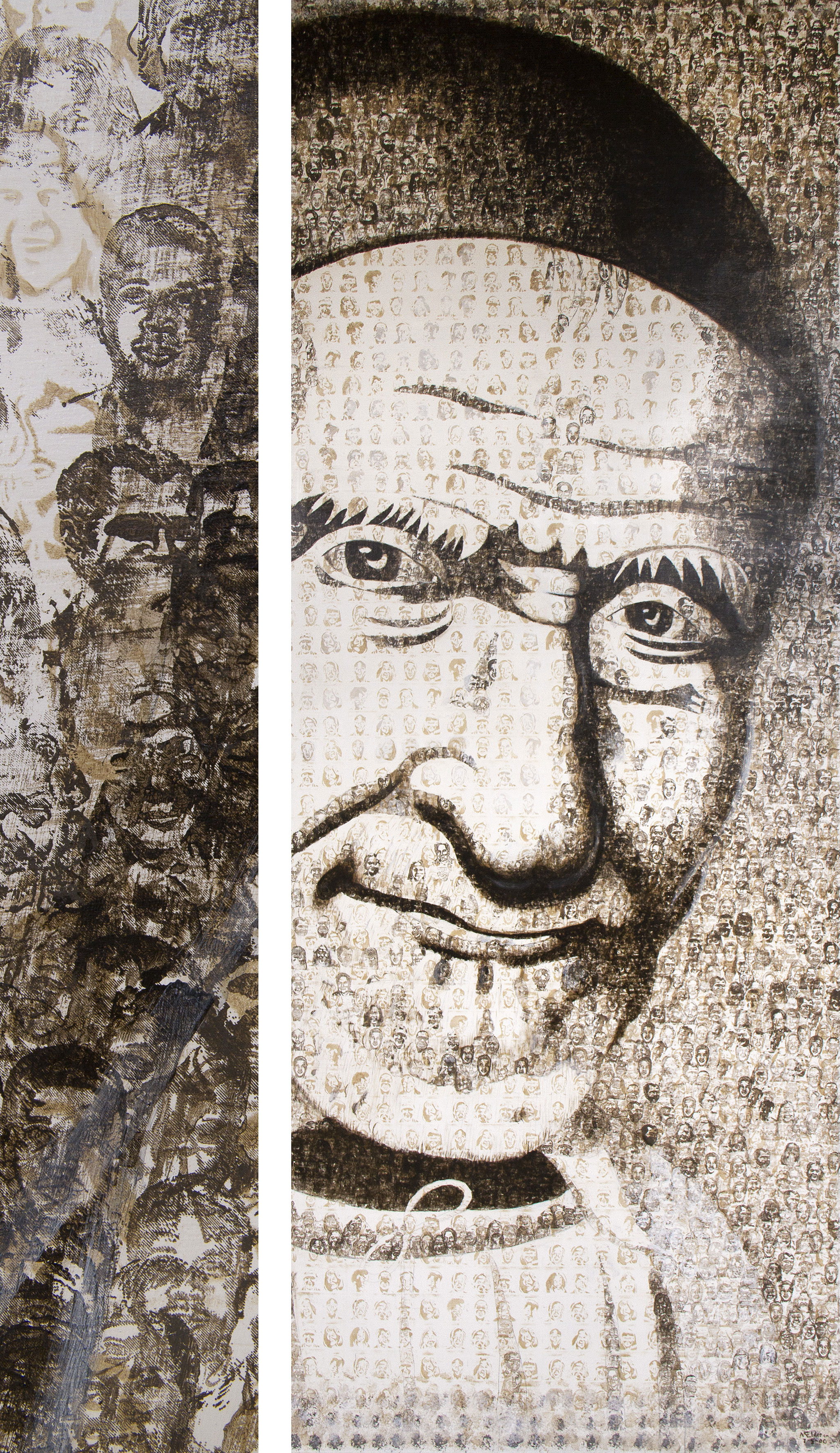
A Mural at the General Curia of the Congregation of the Mission
These murals are a gift from the Midwest Province of the United States of America to the General Curia of the Congregation of the Mission. Brother Mark Elder, a member of the Western Province, painted them in 2000, involving the members of the Curia in the process. After consulting those living at the General Curia at that time, Brother Mark developed the theme described in the title. He implemented the following suggestions from members of the Curia:
a. to profit from the attractiveness of the rectangles found in the architecture of the house and its windows
b. to avoid historical narrative and, instead, to use symbols from nature to describe the five virtues and the four vows of the Congregation.
As a symbol of the Congregation’s global outreach and the universality of the Church’s mission, he used Latin for all the sayings. Translations are provided in the text below.

On this wall a large portrait of St. Vincent De Paul greets the visitor. It is made up entirely of hand-stamped portraits of real people. Symbolically, they represent the Vincentian Family and those it serves. The Family, in each era, is an ongoing portrait of Vincent. The artist created a much larger version of this mural in Chicago, but it has now been destroyed.
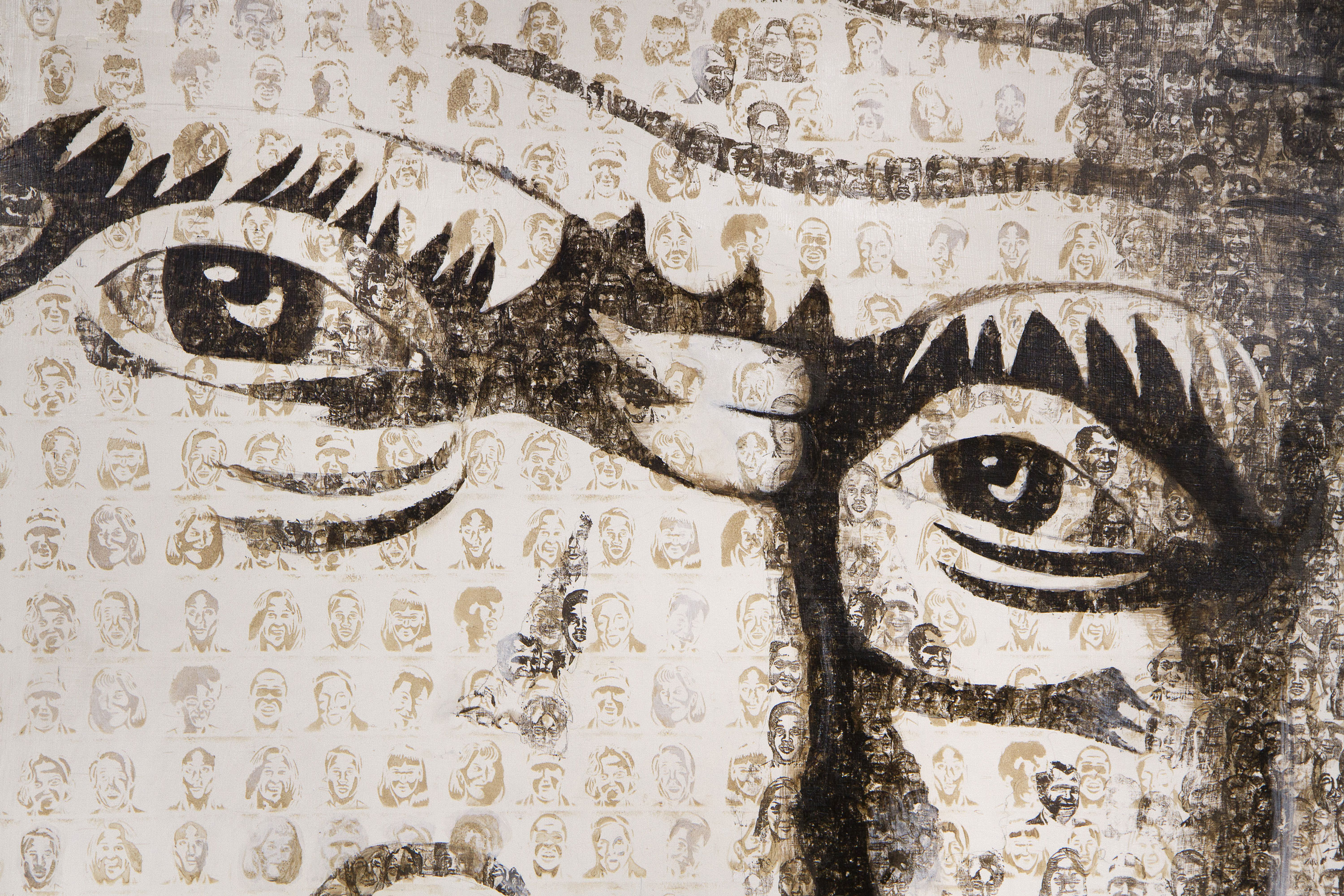
Here, the artist used Millet’s THE GLEANERS, focusing on the body language of the three main figures.
He created windows in the painting to represent the five virtues as he envisioned them.
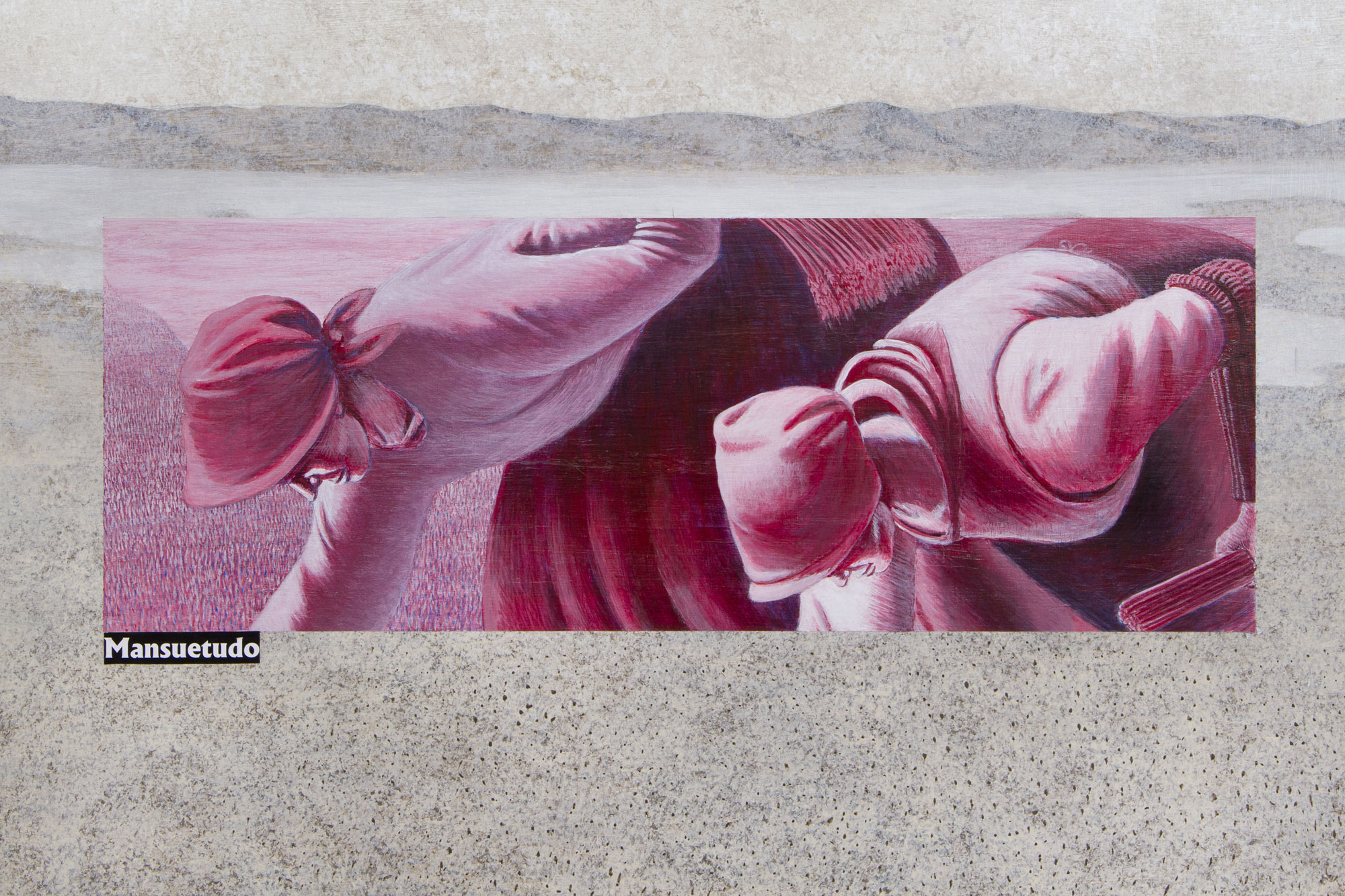
Magenta: Mansuetudo = Meekness.
Here the figures are depicted as doing the will of God peacefully.
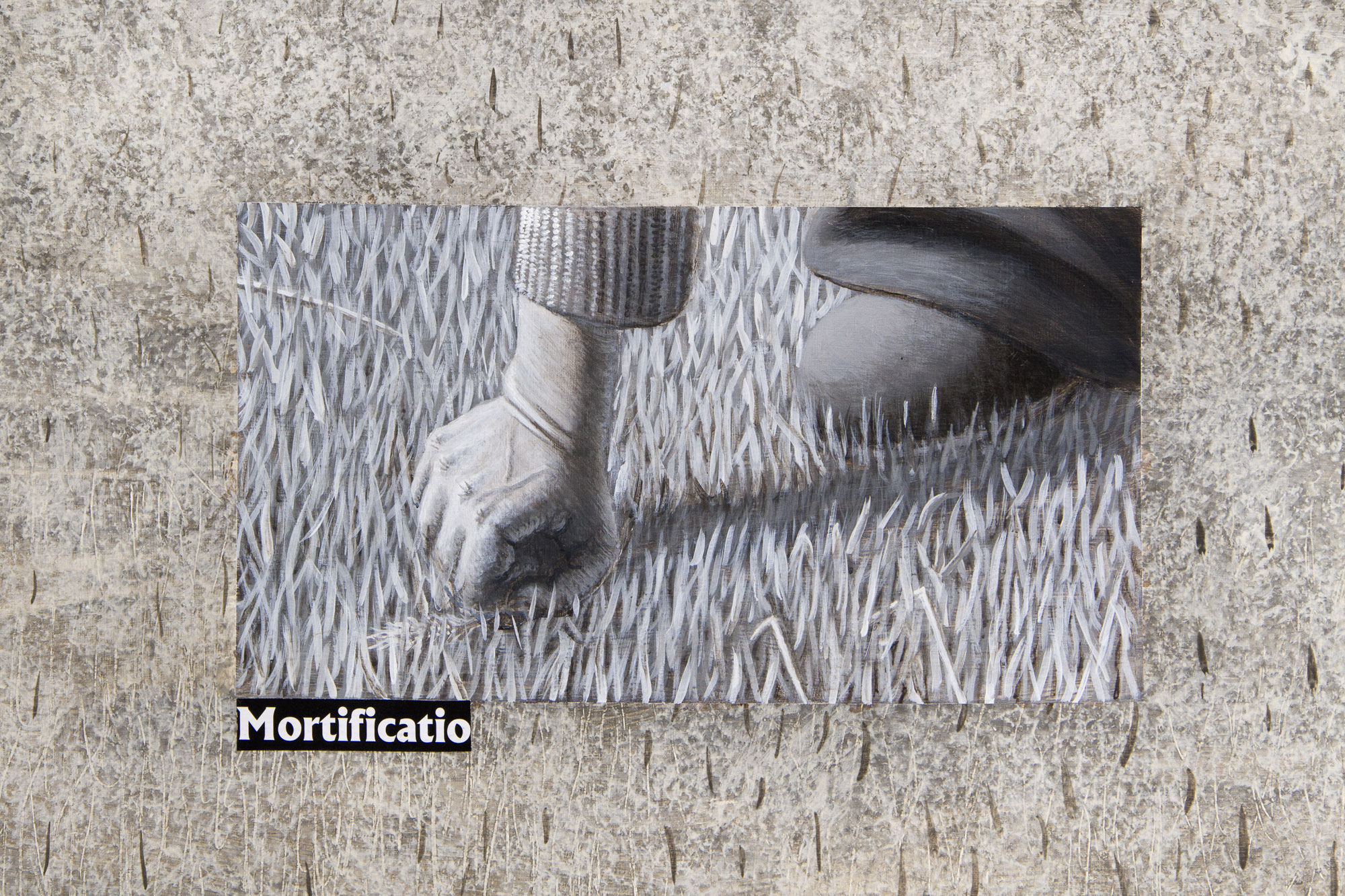
Black&White: Mortificatio = Mortification.
The act of doing the will of God is often very plain, not glamorous, and frequently painful.
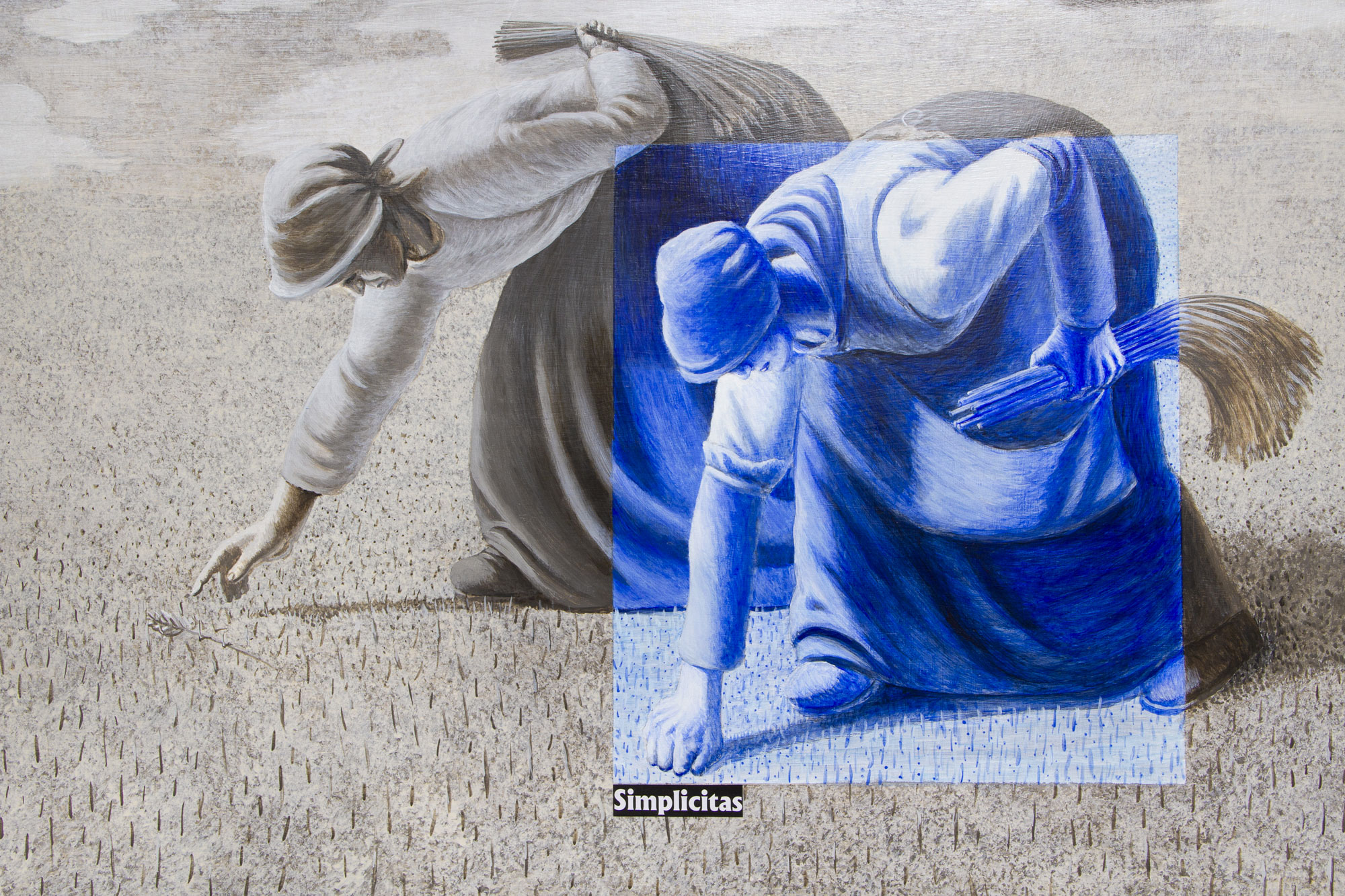
Blue: Simplicitas = Simplicity.
Here the focus is on the act of picking something up off the ground; in this case, a kernel of wheat. Something very simple
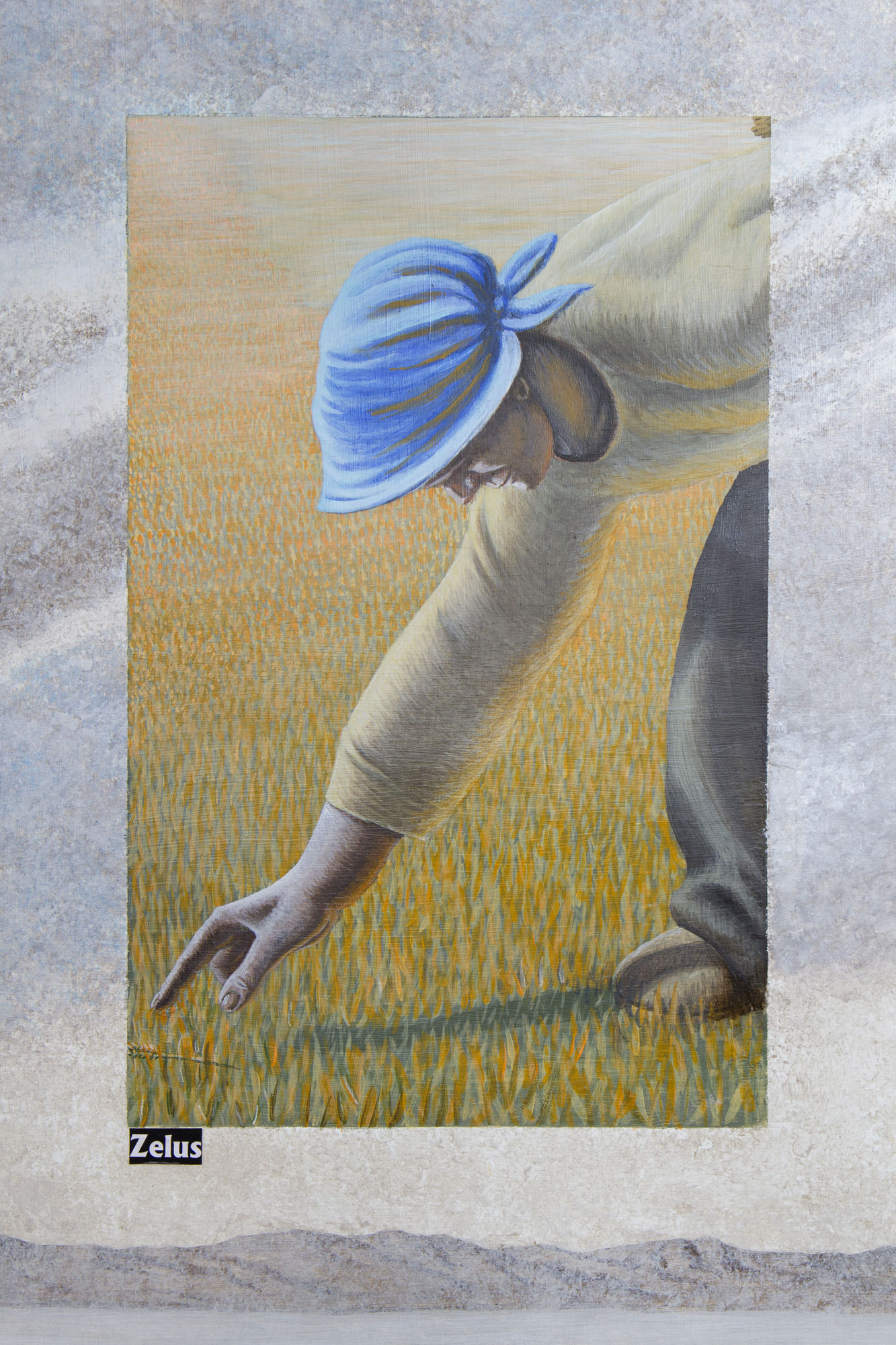
Orange: Zelus = Zeal.
The figure radiates potential. As she reaches out, she is aglow with the energy of fire.
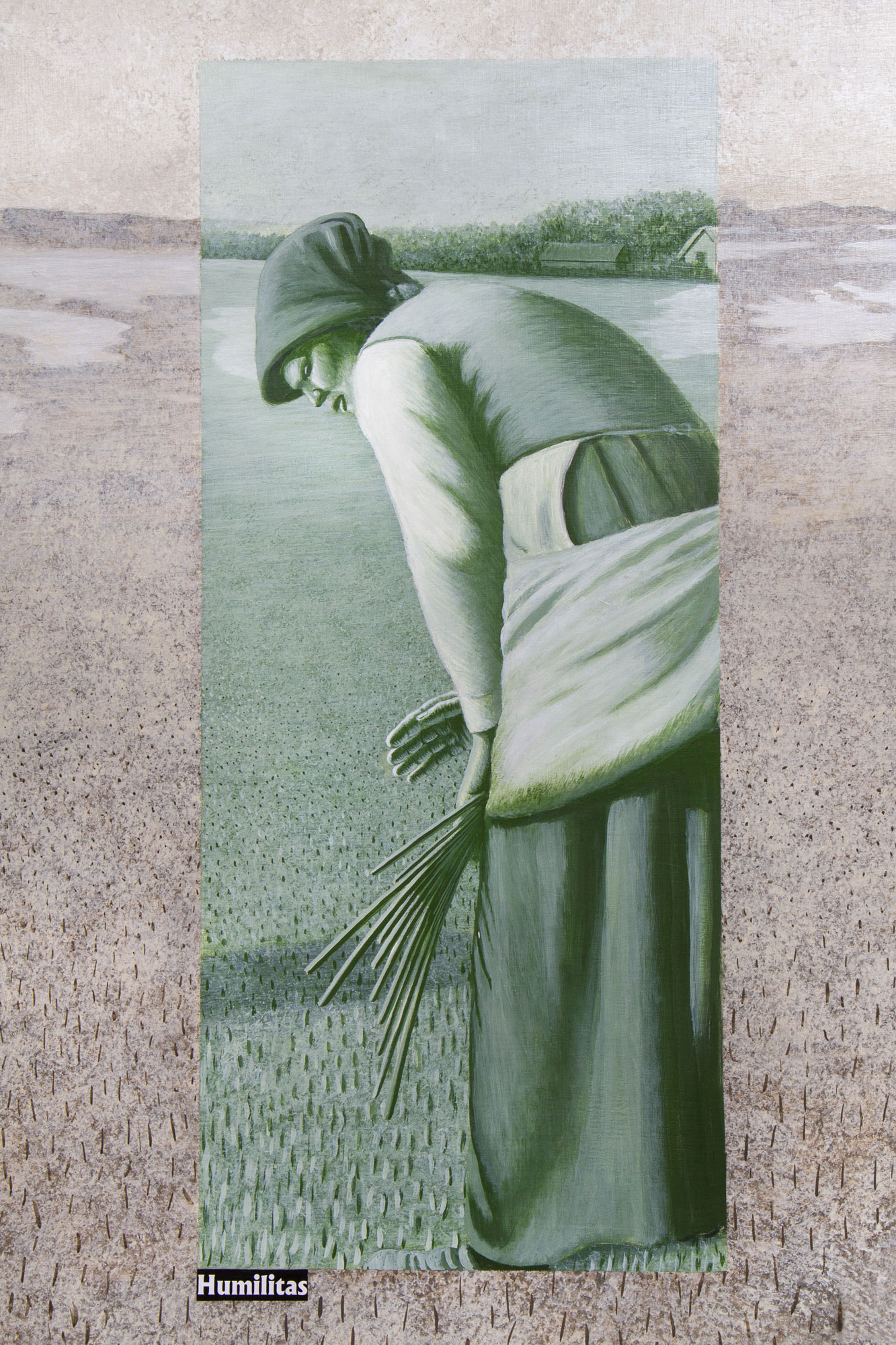
Green: Humilitas = Humility.
The posture of this figure reminds us that we must be humble and submit to the will of God.

Oboedientia = Obedience:
Here the focus is on the individual’s submission to the authority of superiors (in the background here, the Church is a symbol of authority.
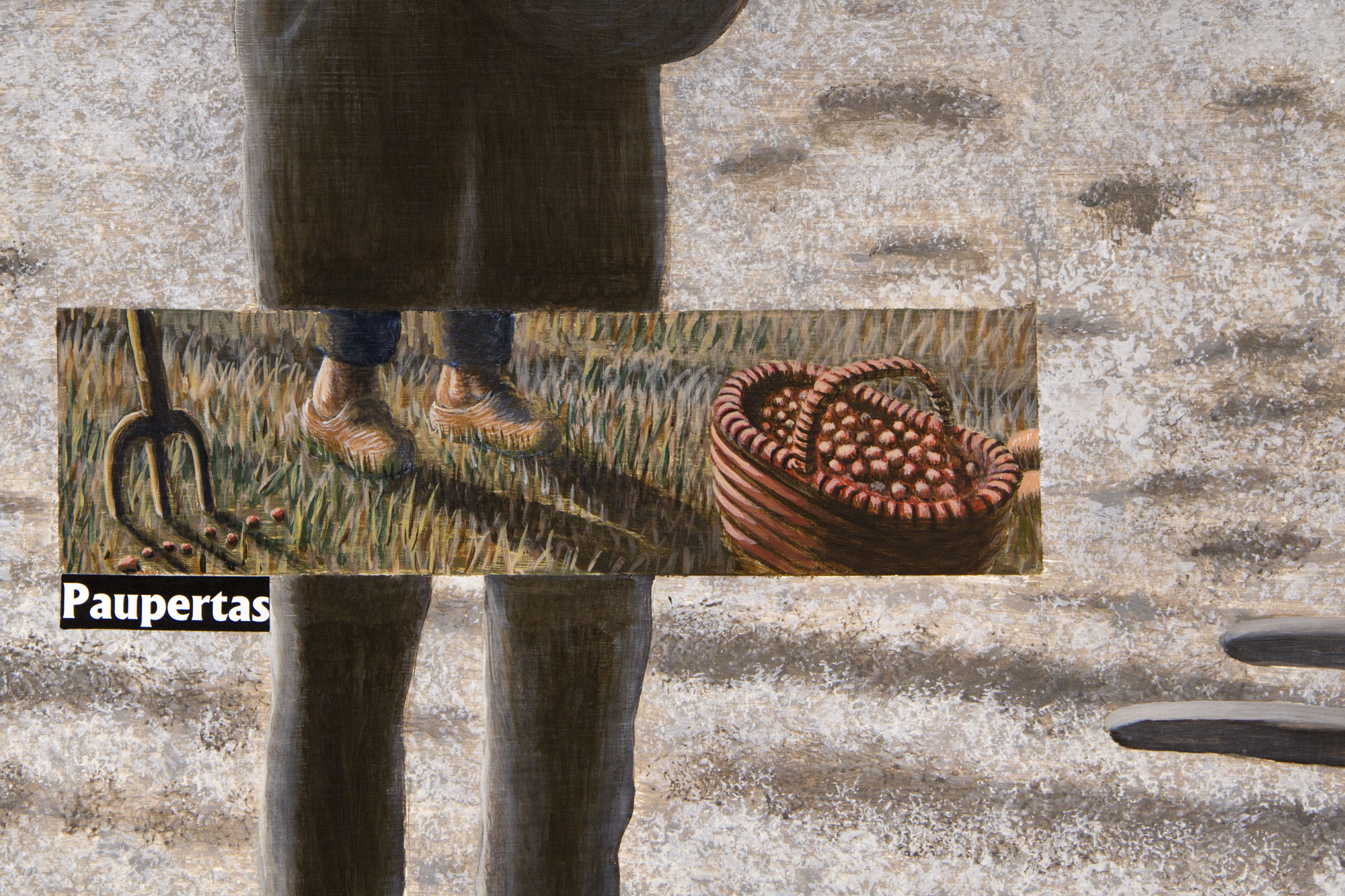
Paupertas = Poverty:
The focus here is on using the goods of the Community well: doing what we can with what we havey.

Castitas = Chastity:
The focus here is on the space , autonomy ,and respect that each person deserves. Therein lies a freedom that allows us to do the will of God.
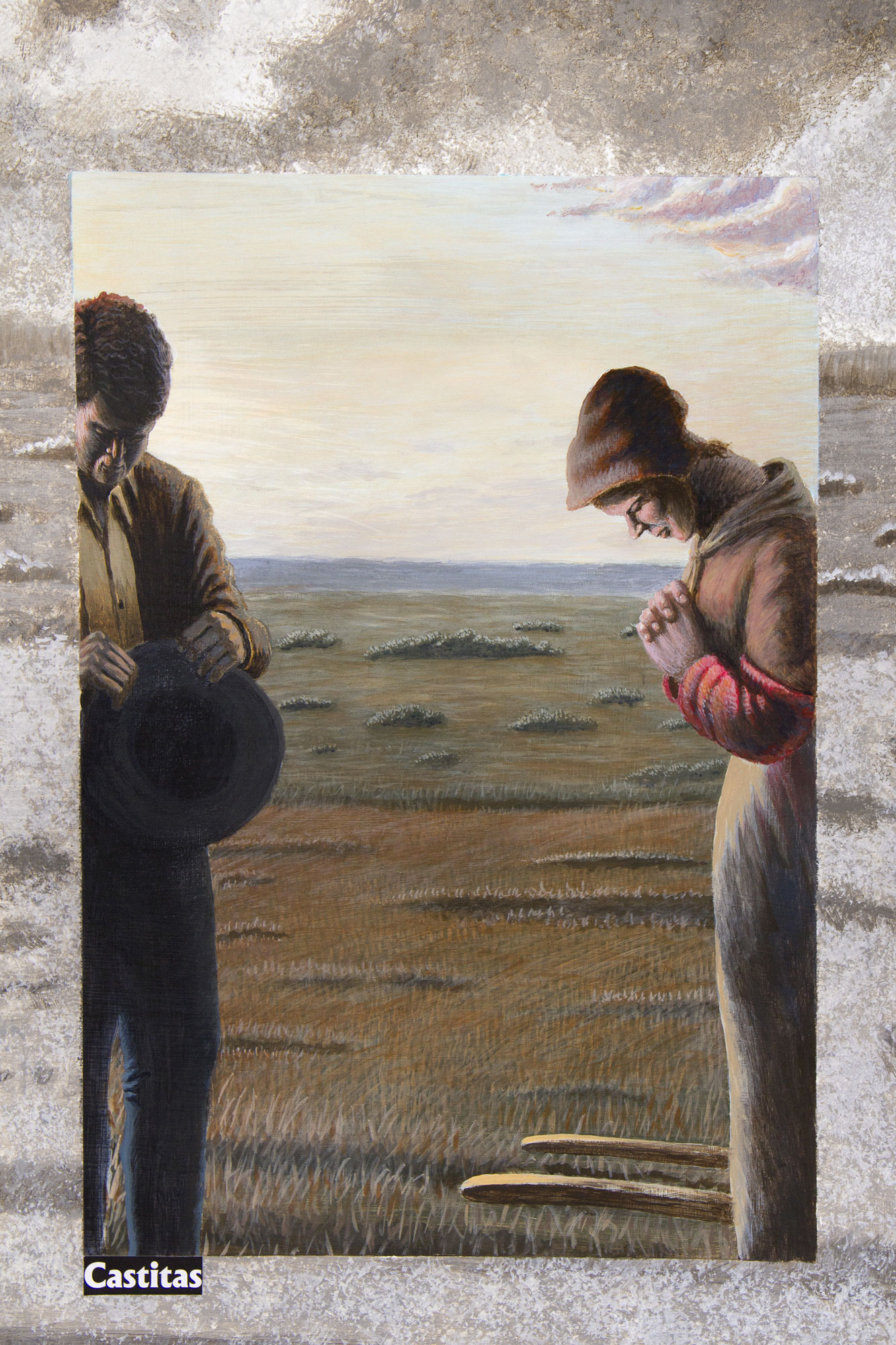
Stabilitas = Stability:
The artist uses the image of land to symbolize the call of the missionary to go wherever he is needed.
As you leave, you see the image of the Holy Spirit and the word “Evangelizare…”. The informed viewer is reminded immediately of the motto of the Congregation of the Mission “Evangelizare pauperibus misit me… He sent me to bring Good News to the poor .” It is the the Holy Spirit who sends us out to evangelize. Passing through the door, we enter the harvest of the Lord, symbolized by the wheat field on the two door posts. As you go out, you see, mixed in with the wheat, some of the human faces that make up the portrait of Vincent.
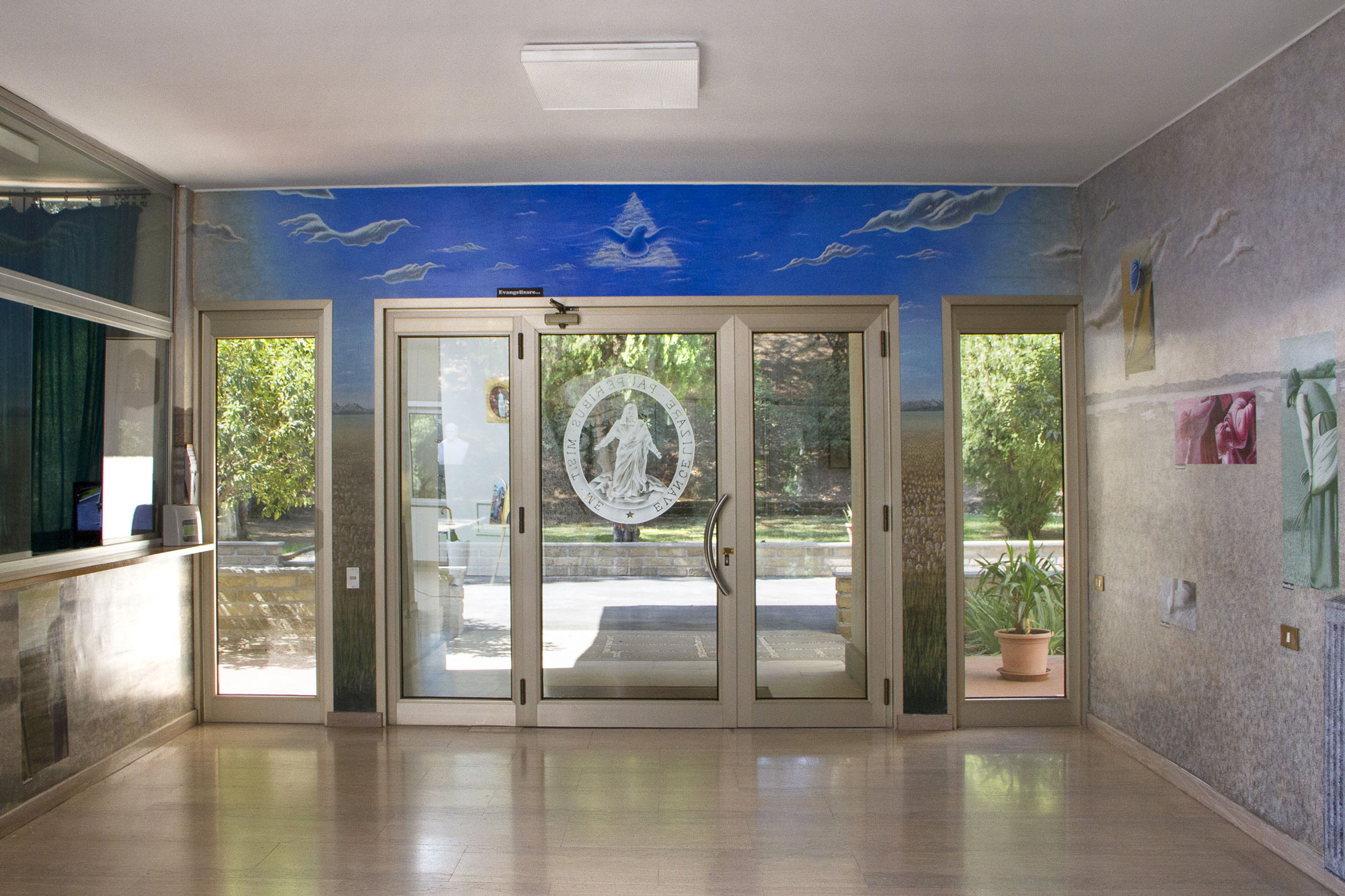

Ha creato delle finestre nel dipinto per rappresentare le cinque virtù secondo il suo punto di vista.

Magenta: Mansuetudo = Mansuetudine.
Qui le figure sono rappresentate mentre compiono la volontà di Dio, in atteggiamento pacifico.

Black&White: Mortificatio = Mortificazione.
Il compiere la volontà di Dio è spesso qualcosa di molto semplice, non sempre attraente e spesso doloroso.

Blue: Simplicitas = Semplicità.
Al centro viene messa l’azione del raccogliere qualcosa dalla terra, in questo caso un chicco di grano. Qualcosa di veramente semplice.
Orange: Zelus = Zelo.
L’immagine esprime potenziale. Quando si allunga diventa raggiante dell’energia del fuoco.


Green: Humilitas = Umiltà.
La postura di questo personaggio ci ricorda che dobbiamo essere umili e rimetterci alla volontà di Dio.
Oboedientia = Obbedienza:
Qui l’attenzione è posta sulla sottomissione dei singoli all’autorità dei superiori (sullo sfondo la Chiesa, simboleggia l’autorità).


Paupertas = Povertà:
L’attenzione è posta sul giusto utilizzo dei beni della Comunità: fare ciò che si può con ciò che si ha.
Castitas = Castità:
Qui l’attenzione è posta sullo spazio, l’autonomia ed il rispetto che ciascuno merita. Contiene la libertà che ci permette di compiere la volontà di Dio.


Stabilitas = Stabilità:
L’artista usa l’immagine della terra per simboleggiare la chiamata del missionario ad andare ovunque ci sia bisogno di lui.

